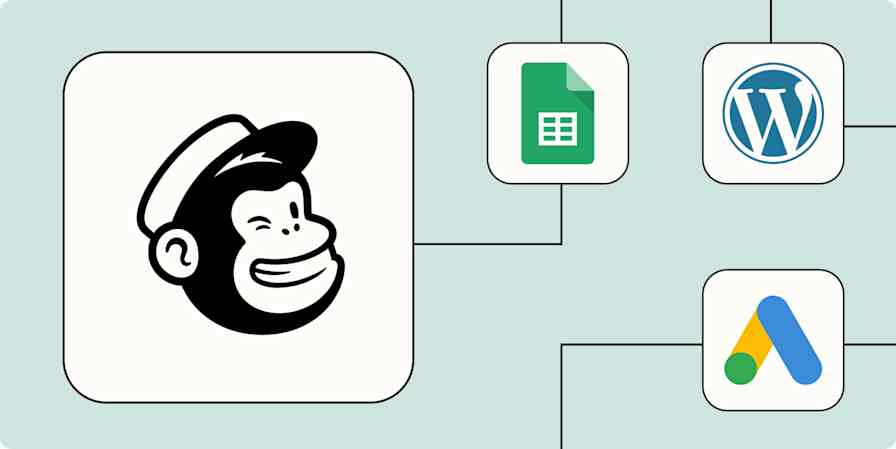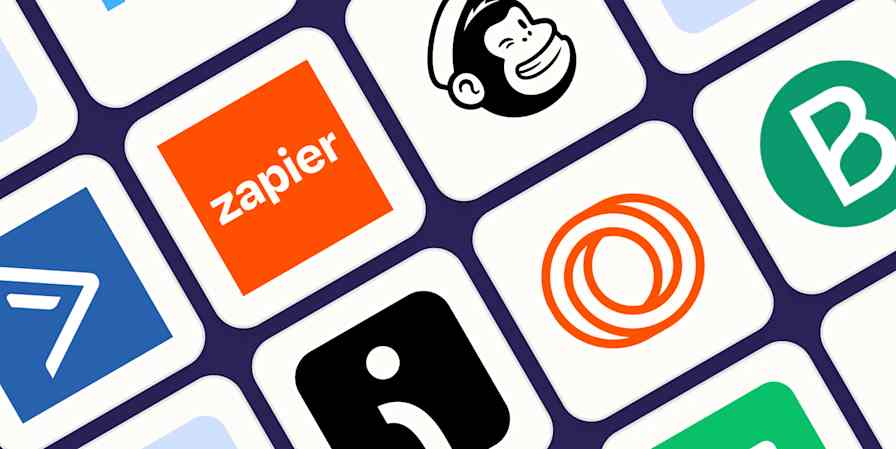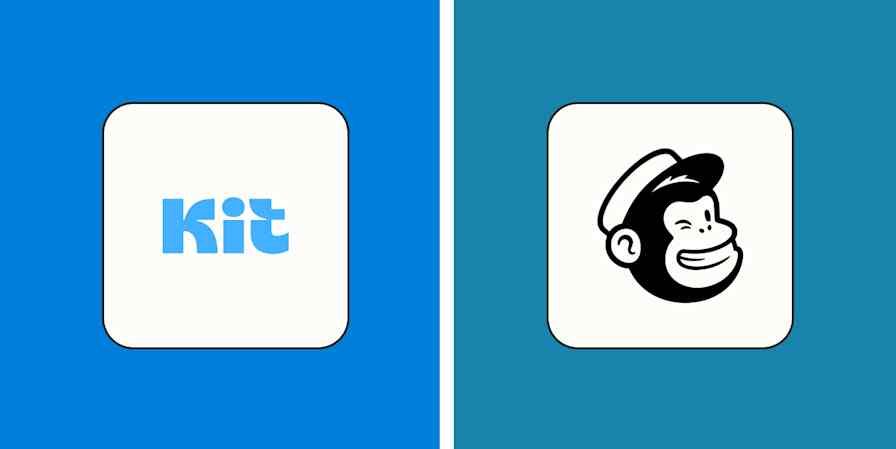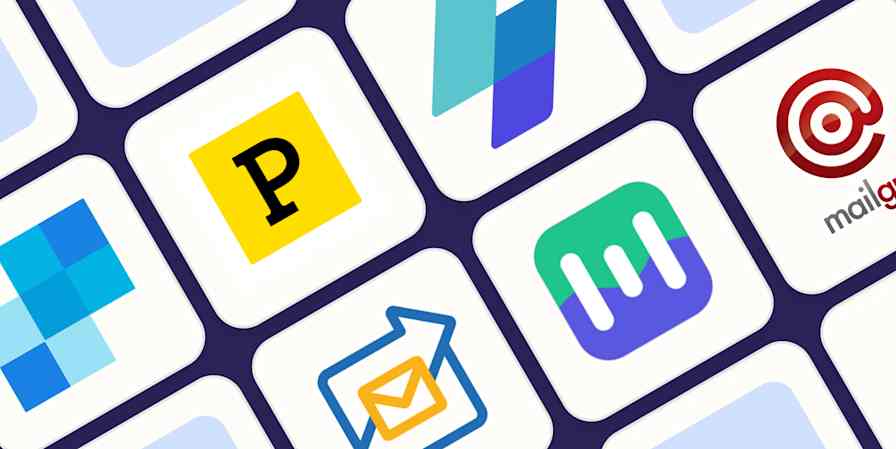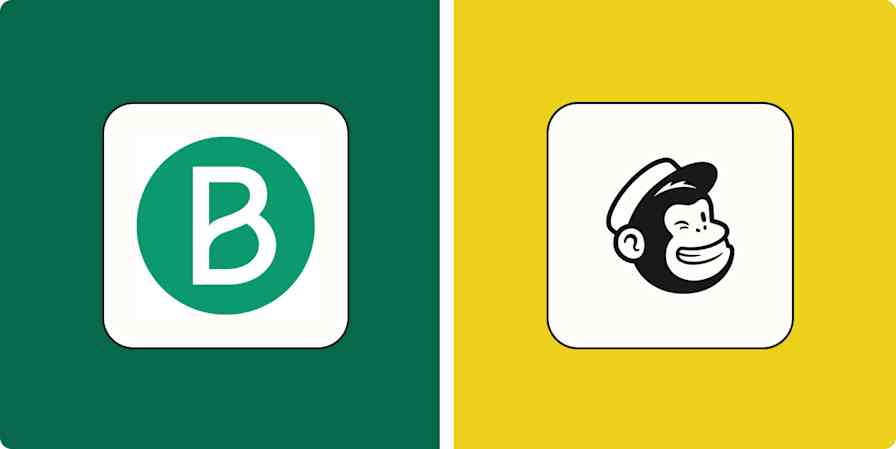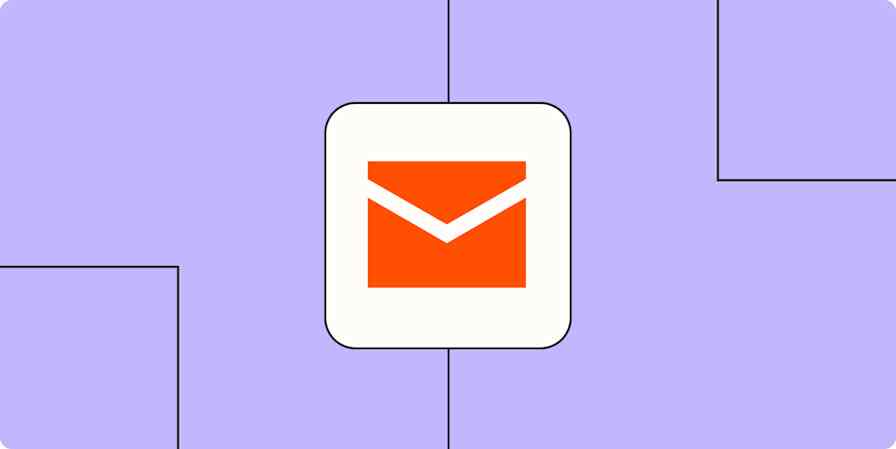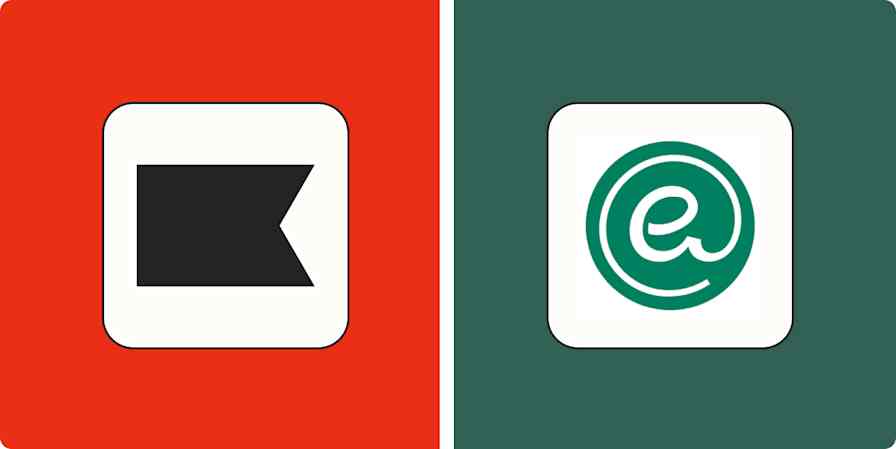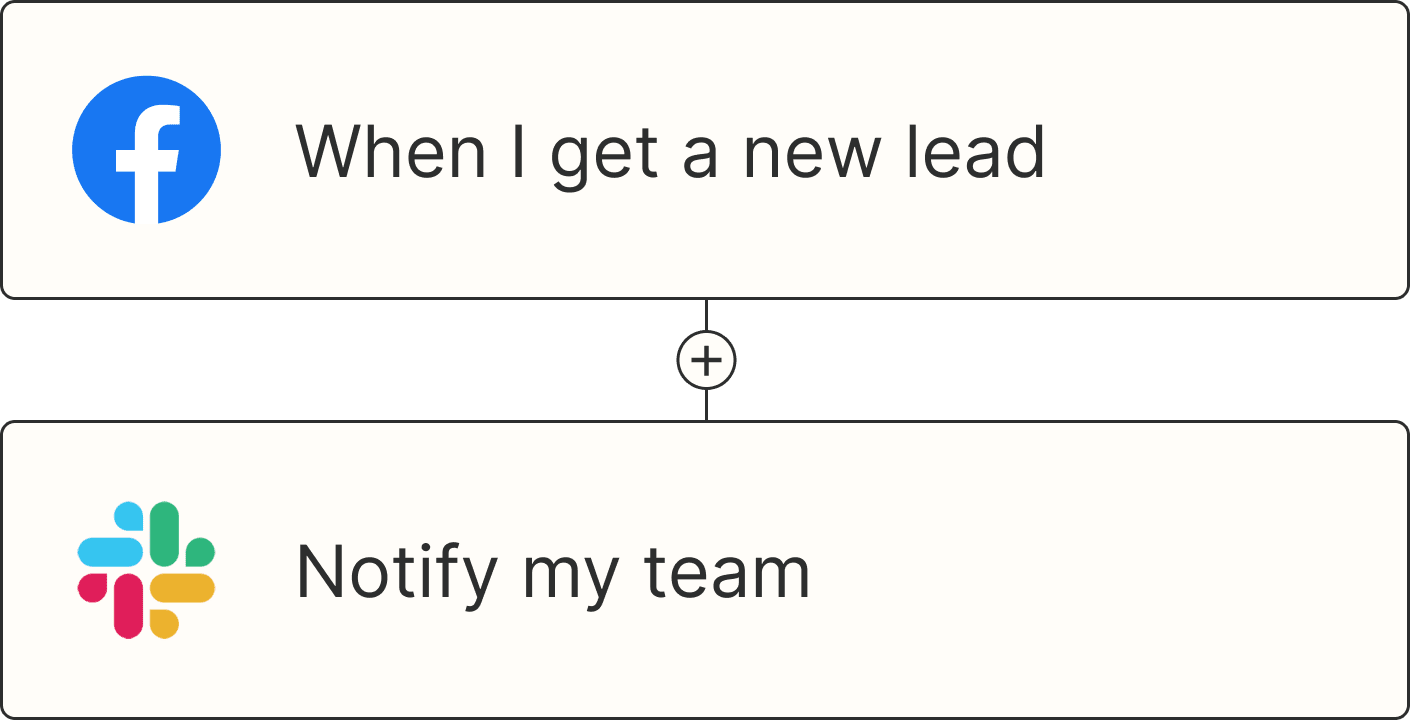For most of my career, I've used HubSpot for marketing simply because the software companies I worked for already used that platform when I joined the team. But since going freelance, I've worked a lot more with clients who use Mailchimp.
HubSpot and Mailchimp are both excellent marketing tools, but my experience of using them over the years has taught me that they're suited to quite different markets. For this article, I spent time in both apps to dig deeper into the differences between HubSpot and Mailchimp and see how they stack up. Here's what I found.
Table of contents:
HubSpot vs. Mailchimp at a glance
Choosing between HubSpot and Mailchimp as your marketing platform depends on a few core factors:
Your budget
Your business goals
Who will be using the tool
In the end, these are completely different tools with completely different goals. Mailchimp is purely marketing software, whereas HubSpot is an all-in-one tool that can (if you want) combine marketing, sales, content management, customer service, commerce, and operations into one platform. For that reason, HubSpot is built to do a lot more than what Mailchimp can do.
If you want a tool that can do your marketing, sales, content management, customer service, commerce, and operations, then you shouldn't be comparing HubSpot to Mailchimp at all—instead, you'll want to compare HubSpot with Salesforce or a similar all-in-one tool.
Here, I'll focus on comparing the parts where Mailchimp and HubSpot overlap. In practice, this means comparing Mailchimp's full offering with HubSpot's Marketing Hub package, focusing mainly on email marketing, marketing automation, landing pages, reports, and analytics.
| HubSpot | Mailchimp |
|---|---|---|
Cost | ⭐⭐⭐ Limited free plan; paid plans are more expensive (and not super straightforward), but it can be cost-effective if you plan to use all the features available; one-off onboarding cost per organization | ⭐⭐⭐⭐ Decent free plan and pricing system that comes in three tiers; Premium tier is substantially more costly than the other two plans; no onboarding fee |
Ease of use | ⭐⭐⭐ A steeper learning curve for new users because it's an all-in-one tool | ⭐⭐⭐⭐ Comparatively beginner-friendly |
Contact and email limits | ⭐⭐⭐ No marketing contacts on free plan; 1K marketing contacts on Starter, 2K on Pro, and 10K on Enterprise, with any additional marketing contacts billed per 1K/5K/10K respectively; email send limits are based on number of contacts you're paying for (5x on Starter, 10x on Pro and 20x on Enterprise) | ⭐⭐⭐⭐ 500 free marketing contacts on all plans except Premium, which comes with 10K marketing contacts; plan price goes up incrementally depending on any extra marketing contacts you have (if not on Premium); 1,000 email sends per month on the free account, with send numbers going up incrementally depending on the number of marketing contacts you have (10x on Essentials, 12x on Standard, and 15x on Enterprise). |
Landing pages | ⭐⭐⭐⭐ 30 free landing pages on the free plan; up to 10,000 on any paid plan; pages are more customizable, with smart content and A/B testing available on the Professional plan | ⭐⭐⭐ Unlimited landing pages on the free plan, but there are more limitations and no A/B testing available |
Automation | ⭐⭐⭐⭐⭐ Very advanced automations available | ⭐⭐ Basic automation; impressive for an email marketing tool but doesn't compare to HubSpot |
Email design and templates | ⭐⭐⭐⭐ Dozens of templates; very customizable | ⭐⭐⭐⭐ 130+ templates; less customizable |
Analytics | ⭐⭐⭐⭐⭐ 30 reports free; goes up to 100 reports on Starter plan, 750 on Professional, and 1,500 on Enterprise; deep and valuable metrics | ⭐⭐⭐ Very basic on free plan and not as insightful as HubSpot even on the most expensive plan |
Social media | ⭐⭐⭐⭐ Advanced scheduling, publishing, monitoring, and analytics; can manage up to 300 accounts from the one platform, but the feature is only available on Professional and Enterprise tiers | ⭐⭐ Basic posting options; scheduling available only on paid plans; can only schedule posts for 2+ hours in advance |
Integrations | ⭐⭐⭐⭐⭐ Almost 2,000 native integrations; also integrates with Zapier | ⭐⭐⭐⭐ 250+; also integrates with Zapier |
HubSpot's sophisticated marketing automation caters better to longer buyer lifecycles
Based on my experience using both HubSpot and Mailchimp, I'd say it's the automation features that really set the two tools apart. When it comes down to it, HubSpot's automations are just a lot more advanced than Mailchimp's.
This is primarily because HubSpot is built with a different end-goal in mind. HubSpot is an all-in-one tool that caters to larger businesses with sales teams. As an inbound marketing tool, it allows you to use sophisticated automation workflows to nurture contacts through longer buyer lifecycles (check out a few of my favorite HubSpot workflows). These workflows allow you to trigger automated email sequences that nurture contacts down the marketing funnel and allow you to segment your audience based on their behavior, lead scoring, and what stage they are in the buyer lifecycle.
Here's an example of what a HubSpot's workflow looks like:

While Mailchimp's automation is pretty advanced for an email marketing tool, it's much more basic compared to HubSpot. Even on the free plan, you can set up autoresponder emails that trigger when someone fills out a form or makes a purchase on your website, and on the Essentials and Standard plans, you get access to a customer journey builder that allows you to create basic workflows based on customer behaviors (e.g., when they sign up to make a purchase, they're tagged as a "New customer" and sent a welcome email).
Here's an example of what an automation workflow looks like on Mailchimp:

If you're a business that has a short buyer cycle (e.g., a customer can land on your website for the first time and might make a purchase on the same day), this is all the automation you're likely to need. But if your customers tend to take longer to make a purchase (maybe they'd want to speak to a salesperson because it involves more money or commitment), then a tool like HubSpot will better support your needs.
Building and sending an email in Mailchimp is simpler
Both Mailchimp and HubSpot offer excellent email builders that are easy to use and intuitive—even for someone with no design or marketing experience. You can easily add elements like text boxes, images, videos, and social buttons just by dragging them into your email from the sidebar menu. It's also easy to drag and drop your different elements around the page, select the colors you want, and add images and logos to get your emails looking on-brand.
To show you how similar they are, here's Mailchimp's classic editor:

And here's HubSpot's:

If you're a bit more confident with email design, you can choose to build your own emails, but both tools have a decent selection of slick out-of-the-box templates. Having said that, Mailchimp comes with double the number of templates HubSpot has (130+ designs compared to 45ish in HubSpot), which makes it stand out as the quick-and-easy option if you're less confident with designing your own emails.
When it comes to actually sending your emails, you don't have to think too hard with Mailchimp. Because HubSpot's email tool is deeply integrated with a CRM, there are a lot more fields to check through before you hit the Send button, which leaves a bit more room for human error. Even after using HubSpot for years, I still get that sense of trepidation that I might have missed something each time I send an email because there's so much to think about. You don't get that feeling sending emails through Mailchimp.
HubSpot offers more advanced analytics
For any marketing tool to do its job of supporting your marketing strategy, it needs to provide analytics that you can learn from. Both HubSpot and Mailchimp offer reporting features that provide metrics on everything you can do with each tool.
Naturally, HubSpot's analytics features are more advanced than Mailchimp's, because as a tool, it's built to do more. As an all-in-one tool, it makes sense that HubSpot has made analytics a main feature, as this helps users visualize the impact different areas of the business have on each other and on company revenue when using the platform.
You get 30 reports on HubSpot's free plan, and it goes up to 1,500 on the Enterprise package. When I ran a marketing team, we structured our entire marketing strategy and all our meetings around HubSpot dashboards because the data they provided was so valuable and easy to customize to our needs.

Mailchimp's analytics offering is more basic in comparison, but if you're only using reporting to understand how people are engaging with your email marketing, it gets the job done. You can review the stats of individual emails on the free plan (for example, opens, clicks, and unsubscribes), and if you upgrade to Standard or higher, you get a wider overview that allows you to compare your campaign data.

Recently, Mailchimp has done some work on upgrading its analytics and reporting to provide more in-depth, actionable insights for those paying for their marketing plans. But if deep analysis and reporting are an important part of your marketing strategy, HubSpot can support this better than Mailchimp.
Mailchimp is easier to set up
Considering everything I've covered so far about these two tools, it won't surprise you that Mailchimp is easier to set up than HubSpot. Since HubSpot is a more complex tool that offers a whole load of different features, it takes a bit more consideration to embed it into a business.
When you opt for the higher tier plans, you need to pay a one-off onboarding cost to cover training and initial setup (e.g., data migration from a previous system and anything else needed). This is charged per organization, at $3,000 for Professional and $7,000 for Enterprise, regardless of how many users you have—so this adds a good chunk to the initial cost of HubSpot. But having been through the onboarding process without this added support, I can verify that it's worth the investment to get over that steep learning curve.
It's also not uncommon for companies to hire external HubSpot consultants for training and support. In fact, there are entire agencies that focus exclusively on providing HubSpot assistance—they even list out their top HubSpot solutions partners on their website.
Mailchimp solution partners aren't a thing—and Mailchimp doesn't charge any onboarding costs—because the tool isn't complex enough to require it. If you go for a mid-tier or higher plan, you get one personalized onboarding session for free to run through the basics as part of the plan, and that's all you're likely to need. The setup process with Mailchimp is pretty quick and straightforward—you could be set up and using the tool in less than an hour.
One example of the contrast in setup is importing contacts. In Mailchimp, it's really easy to do because the fields are all extremely basic: all you can include in your CSV is the contact's first name, last name, and email address. When doing the same in HubSpot, it's a more complicated process. Because HubSpot is also a CRM, every contact you upload will be stored with its own contact record. These contact records have a whole load of fields that help growth teams build a picture of who the contact is and how warm they are as a lead. It's pretty advanced, and this makes importing contacts a bit more tricky—you have to spend a decent amount of time preparing your CSV before you import it into HubSpot. HubSpot oversees this part of the process to make sure you get it right, which is one of the reasons they charge for Marketing Hub onboarding.
HubSpot landing pages are more customizable
Both HubSpot and Mailchimp offer functional, well-designed landing pages for capturing leads, but you can do a bit more with landing pages on a HubSpot package.
While Mailchimp offers an unlimited number of landing pages, you only have 10 template designs to choose from, and they don't offer much wiggle room for customization. If you do customize a landing page to make it more unique to your brand, you can't save it as a new template for future use.
You're limited to 20 landing pages on the HubSpot free plan, but realistically, you're not likely to ever hit that limit on a budget-free marketing strategy anyway. HubSpot offers 20 landing page template designs and they're more customizable, with custom HTML. You can also A/B test HubSpot landing pages, save CTA buttons, and add smart rules that mean visitors see a slightly different version of a landing page based on different criteria like their country/language or stage in the buyer lifecycle. None of these extra options are accessible with Mailchimp's landing page builder.
Mailchimp is more affordable for email marketing
Both Mailchimp and HubSpot have pretty generous free plans, but the way HubSpot's charging structure works makes its email marketing features unusable on the free plan. Here's how they compare:
Mailchimp's free plan gives you 500 marketing contacts and 2,500 email sends a month.
HubSpot's free version gives you unlimited contacts and 2,000 email sends a month, but there's a catch: you can't send email campaigns to these people as they're not marketing contacts. You can only send them one-to-one transactional emails.
Once you move to a paid plan, Mailchimp is still the cheaper option. With three tiered options that go up incrementally depending on how many contacts you have, Mailchimp's simple pricing structure is really one of its strengths. HubSpot also has three tiers for its paid marketing plans, but they work out to be more expensive because they offer more features. HubSpot does offer customizable bundles in an attempt to make the tool more affordable, but it still gets very expensive pretty quickly.
For example, if you had 5,000 contacts, you could send 60,000 emails a month for $100/month on Mailchimp's Essentials plan. On HubSpot's equivalent Starter plan, that same number of contacts would cost you $160/month ($40 per 1,000 with first 1,000 free), and you'd be able to send less than half the number of emails (25,000 emails, which is five times the number of contacts).
If you're at a larger org and budget isn't an issue for you, HubSpot for sure has more to offer and will scale with your teams. But if you're a small business looking to build your top-of-funnel marketing contacts, Mailchimp probably does everything you're likely to need it to do.
You can do more with HubSpot's social media features
Both Mailchimp and HubSpot allow you to post to your linked social media accounts without ever having to leave the platform. But with HubSpot, you can manage your entire social media marketing strategy directly from inside the tool.
The way social media is embedded into both tools' pricing plans is indicative of what they can do (and who they're catering to): Mailchimp's social media offering is basic but can be used for free; HubSpot's is a lot more advanced, but it comes at a cost.
On Mailchimp's free plan, you can create social messages and post them across Facebook, Instagram, and X (but scheduling is only available on paid plans).

And that's just about all you can do. In fact, social media is such a low priority for Mailchimp that it's not even listed on their marketing pricing plan.
HubSpot, on the other hand, only gives Professional-tier users and higher access to its social media management tools. But it's easy to see why it's limited to paid packages—you can do so much with it.
To start, you can manage a load of social media channels from within the platform, including LinkedIn and YouTube (neither of which Mailchimp supports) and get in-depth performance analytics on any of the platforms you manage within the tool. It even tracks and reports on posts that weren't published through HubSpot.

You can also manage conversations and interactions on any of your linked social accounts—up to 300, including employee accounts—directly from within HubSpot. In this sense, HubSpot's social media dashboard is a bit like a social media management tool similar to Buffer. If you're replacing a social media management tool with HubSpot, you can probably justify the cost of the higher-tier package.
Both tools are doing a lot with AI
Where marketing is concerned, both tools come with generative AI-powered content optimization features that can improve your content (or if you're really stuck, even write copy from scratch). But while HubSpot's content optimization is available throughout the marketing software for free, Mailchimp's is only available on the middle-tier Standard plan and above.
The tools have almost identical approaches to AI content writing: you can ask it to write, rewrite, expand, shorten, or change the tone, as you can see from these screenshots.
Here's what HubSpot looks like:

And here's Mailchimp:

Just highlight any rich text, click the AI button, and you'll see options for how you might want to optimize your copy.
Aside from generative AI, both tools have a lot of AI going on behind the scenes, and both tools are working on powerful AI assistants: Hubspot's Breeze Copilot and Mailchimp's Intuit Assist.
Mailchimp, for example, offers AI-powered customer journeys that also generate brand-appropriate emails for each step in the sequence. And it has bigger AI plans, including a "revenue intelligence" feature that predicts when customers will be ready to convert. For its part, HubSpot has AI agents for all sorts of use cases, including social media and content generation, automating a lot of the tasks you'd normally do manually. And you can chat with HubSpot's Breeze Copilot during almost any of your tasks to get insights into what you're working on.
You can automate both tools with Zapier
Both HubSpot and Mailchimp integrate with Zapier, so you can connect them with thousands of other apps to automate your mission-critical workflows. Automatically add new leads to your marketing list, surface ads to new subscribers, and follow up with event attendees. You can build fully automated systems that connect your marketing software to the rest of your tech stack.
Learn more about how to automate business processes in HubSpot and how to automate your email marketing with Mailchimp, or get started with one of these pre-made templates.
Create contacts in HubSpot for new leads from Google Ads
Add new HubSpot contacts to Google Ads customer lists
Add new Mailchimp subscribers to Google Ads customer lists
Add subscribers to Mailchimp for new Google Sheets rows
Zapier is the most connected AI orchestration platform—integrating with thousands of apps from partners like Google, Salesforce, and Microsoft. Use interfaces, data tables, and logic to build secure, automated, AI-powered systems for your business-critical workflows across your organization's technology stack. Learn more.
Mailchimp vs. HubSpot: Which should you choose?
With all this in mind, choosing between Mailchimp and HubSpot should be pretty straightforward once you understand your needs:
Mailchimp will be the right marketing platform for you if:
You need a tool that's simple and easy to use (even for beginners)
Your main focus is email marketing and community building
Your business model relies on shorter buyer lifecycles
HubSpot will be the right marketing platform for you if:
You have more marketing budget to play with
You have experienced marketers running your campaigns
You have a longer and slower buyer lifecycle that involves a sales team
You're planning for substantial growth
Related reading:
This article was originally published in December 2022. The most recent update was in January 2025.

